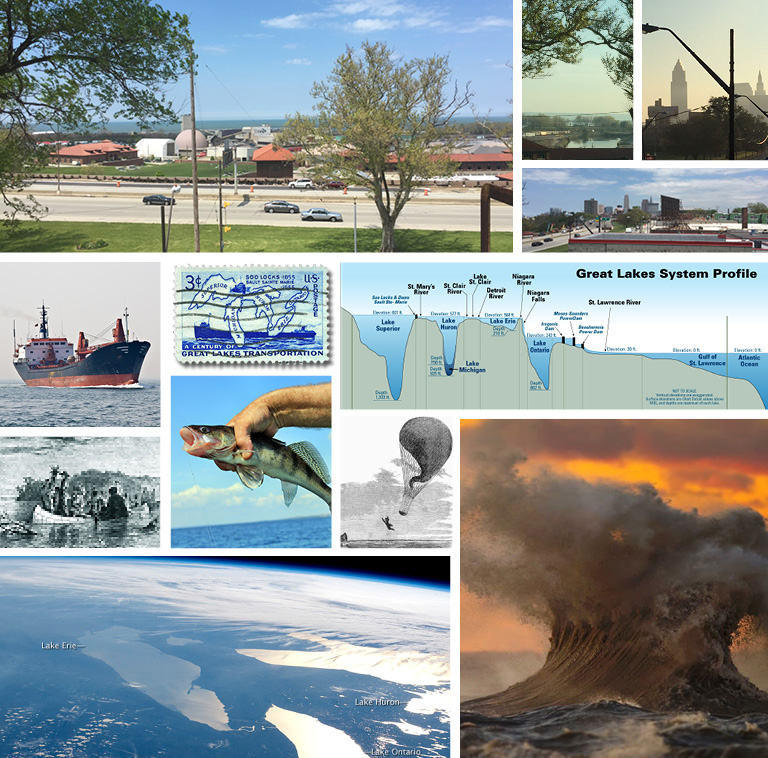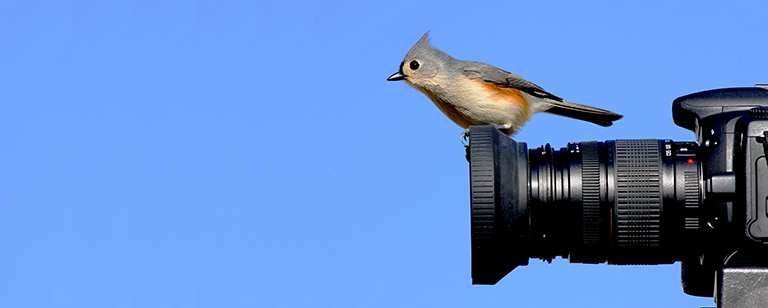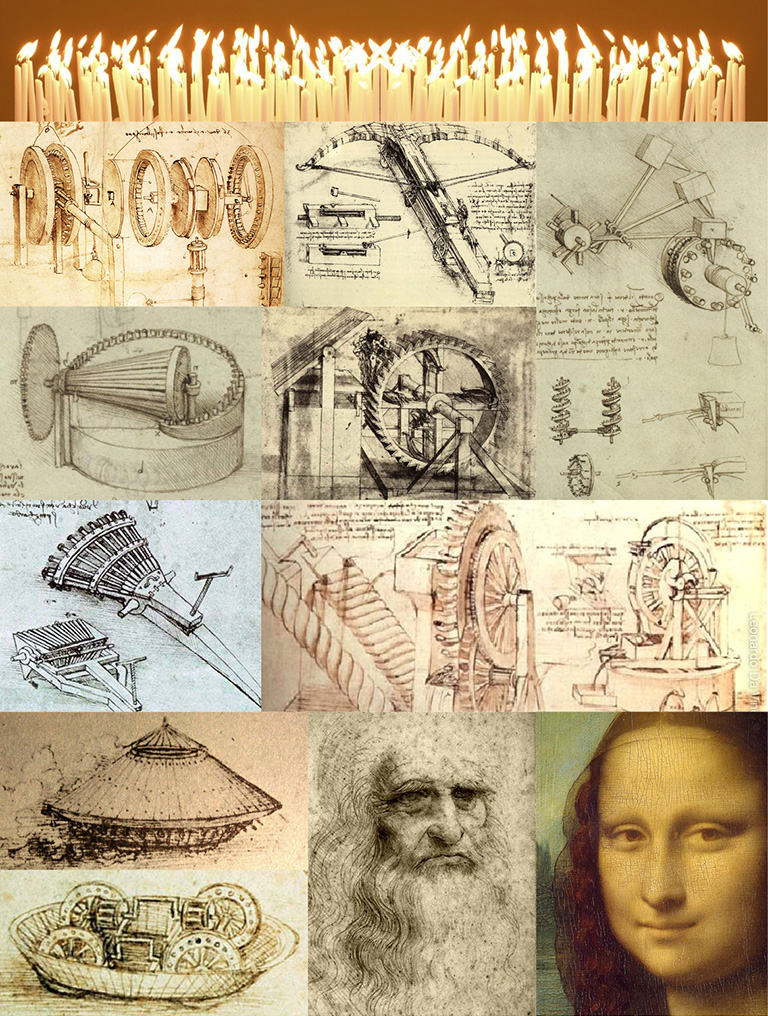God Bless America and Our Veterans
/0 Comments/in Friday Afternoon, Memorial Day /by Steve Kowalski
This Memorial Day, we salute our veterans for their courage and commitment. Take time this weekend with the kids and grandkids and attend a local ceremony and parade in your hometown. Here’s a handy list for our northeast Ohio friends and families.
Parades and Ceremonies:
- Aurora: Parade on May 30 at 10 a.m. at Veterans Memorial Park.
- Avon Lake: Ceremony at Veterans Park on May 30 at 10 a.m. with parade to follow.
- Bath Township: Observance on May 30 at noon at Bath Veterans’ Memorial Park.
- Bay Village: Parade on May 30 at 8:30 a.m. at Huntington Park.
- Bedford: Parade on May 30 at 10:15 at City Hall.
- Berea: Cemetery services at Adams St. Cemetery (8am) Woodvale (9 am) Parade at 10:30.
- Broadview Heights: Parade/ceremony on May 30 at 11 a.m. at Crossings Shopping Center.
- Brunswick: Program and parade on May 30 at 10 a.m. at Vistintainer School.
- Cleveland Heights: Ceremony on May 30 at 10:30 a.m. at Cumberland Park.
- Fairview Park: Observance on May 30 at 8 a.m. in the City Hall Rotunda. Parade at 9 a.m.
- Garfield Heights: Services on May 30 at 10 a.m. at the Civic Center Veterans Plaza.
- Green: Parade and ceremony on May 30 at 7 a.m. at the Green High School parking lot.
- Hudson: Parade on May 30 at 8 a.m., starting at Milford Road and Veterans Way.
- Jackson Township: Field of Honor from May 27 to May 30, Fulton Road and Wales Avenue.
- Lake View Cemetery: (Cleveland) Celebration Garfield Memorial on May 30 at 10:30 a.m.
- Mentor-on-the-Lake: Annual Parade at 1 p.m. on May 29.
- North Ridgeville: Parade on May 30 at 9:45 a.m., beginning at the Marc’s parking lot.
- Painesville: Parade/commemoration at 10 a.m. on May 30, starting at Riverside Cemetery.
- Riverside Cemetery: (Cleveland) Service and dedication ceremony on May 30 at 9:30 a.m.
- Shaker Heights: Parade on May 30 at 9:30 a.m. Lee Road and Van Aken Boulevard.
- Strongsville: Service at Freedom Trail Gazebo on May 30 at 11 a.m. Parade is canceled.
- Suffield Township: Parade on May 30 at 2 p.m.
- Tallmadge: American Legion Memorial Day Parade at May 30 at 10 a.m. at Circle Park.
- University Heights: 50th Parade on May 30 at 11 a.m., beginning at Silsby Road.
- Westlake: Parade on May 30 at 10 a.m. at Clague Park.
- Wickliffe: Parade on May 30 at 10 a.m., corner of Euclid Avenue and Worden Road.
- Willoughby: Parade on May 30 at 9:30 a.m. in downtown Willoughby.
Festivals and fun:
- Berea’s National Rib Cook-Off: May 27 to 30 at the Cuyahoga County Fairgrounds.
- Blossom Time: May 26 to May 30 in downtown Chagrin Falls. Cedar
- Point Armed Forces Memorial Day Weekend: May 27 to May 30. Free to vets.
- Cleveland Metroparks Zoo KidsDays: May 28 to May 29 from 10 a.m. to 7 p.m. Special demonstrations with lions, elephants, and sea lions, as well as an interactive gaming zone.
- Tremont Greek Fest: May 27 to 30 at Annunciation Greek Orthodox Church.
I’m So Lucky
/0 Comments/in Cleveland, Fun Friday, Lake Erie, Trivia /by Steve Kowalski
(top left) From my office window. (top right three photos) From my roof top. (second row left) Freighters pass everyday. (second row middle) A commemorative stamp to Great Lakes Transportation. (second row right) Great Lakes depth chart. (third row left) Frenchman Louis Jolliet first sighted Lake Erie in 1669. (third row middle) Great Walleye fishing! (third row right) Balloonist John Steiner’s first attempt at crossing the Lake Erie in a flimsy balloon didn’t pan out very well. But the whack job from Philadelphia finally made it in 1857. (bottom left) Cool view of Lake Erie from space. (bottom right) Cool view of Lake Erie from the lake during a storm in October. Sports photographer Dave Sandford’s passion is shooting Lake Erie’s monstrous waves. Read about this guy and see more of his images HERE
Years ago when Mom and Dad chose our current location, they knew it was special because of the visibility from the highway. They both wanted everyone to see KHT! Although they probably never realized just how special it was. Back then, inexpensive rent, open manufacturing space and capable local workers, coupled with easy “on/off” access to the highway was what caught their eyes. Being just outside of downtown, along with the local/regional “neighborhood” customers, made Dad’s decision a good one when he started KHT.
Over the years, as most of you know, we’ve acquired adjoining land, added buildings and built needed additions to handle our growth and our expanded array of PIA (pain in the @%$) specialty treatment services. We’ve remained “committed” to Ohio City and Cleveland, and see positive things happening all around us still today.
One great outcome of our location on the “Northshore” is the office view I have, designed to take advantage of the beautiful views of Lake Erie and downtown. Each morning, being the early bird I am, I get to come in really early, and watch the lake and the city come to life. With spring finally here, it’s even more beautiful – awesome trees, blue water, the return of lake freighters, sunrises/sunsets and the renewal of the highway and walkways across the street. If you are ever in town, swing by and take a peek with our telescope … and Thanks Mom and Dad for the great spot!!
So, for my engineers and trivia lovers out there, as I sit here soaking in the views, I thought I’d pass along some Lake Erie trivia. Enjoy.
- Lake Erie is the eleventh largest lake in the world (by surface area), and the fourth largest of the Great Lakes.
- The Lake is 241 miles long, 57 miles wide and has an average depth of 62 ft., with a maximum depth of 210 ft. The water surface area is 9910 sq. miles and its shoreline equals 871 linear miles.
- Ninety-five percent of Lake Erie’s total inflow of water comes via the Detroit River water from all the “upper lakes” (Superior, Michigan and Huron) with help from the St. Clair River, Lake St. Clair and numerous tributaries. The rest comes from precipitation. The lake’s water retention/replacement time is 2.6 years.
- Lake Erie is the shallowest of the Great Lakes and is especially vulnerable to fluctuating water levels, fast storms and choppy waters.
- In 1669, the Frenchman Louis Jolliet was the first documented European to sight Lake Erie, although there is speculation that Étienne Brûlé may have come across it in 1615. Lake Erie was the last of the Great Lakes to be explored by Europeans, since the Iroquois who occupied the Niagara River area were in conflict with the French, and did not allow explorers or traders to pass through.
- The name Erie comes from its southern shore which was at one time occupied by a nation known to the Iroquois League as the “Erielhonan,” or the “long-tails.”. This name is always mentioned by the early French writers as meaning “cat”; Lac du Chat means “Lake of the Cat.” (reference to the wild cat or panther).
- Wind Setups (wind pushing the water from one end of the lake toward the other), usually from west to east, have produced large short-term differences in water levels at the eastern and western ends of the lake, the record being more than 16 ft. Throughout the lake’s history, winds have been so strong, they have stranded boats in the western basin harbors due to shallow waters.
- In 1857, a balloonist named John Steiner of Philadelphia made an ambitious trip across the lake. During his trip, he arose to the height of about three miles, but said he thinks his balloon bounded from the water at least twenty times, striking and then rebounding like a ball, going into the air from twenty to fifty feet, while still rushing down the lake at railroad speed. Just off the shore of Canada, he splashed down, abandoned the balloon, leaped into the water and swam to a nearby boat.
- During the Prohibition years, a “great deal of alcohol crossed Erie” along with “mobster corpses” dumped into the Detroit River, which sometimes washed up on the beaches of Pelee Island. According to one account, Al Capone hid a “fortune” in the walls of the Middle Island luxury club, that featured a basement casino with poker tables and slot machines. No money was found.
- In 1999, the warm lake almost became a problem for two nuclear power plants which require cool lake water to keep their reactors cool. The warm summer caused lake temperatures to come close to the 85 °F, the limit necessary to keep the plants cool.
- The Lake is home to one of the world’s largest freshwater commercial fisheries, and is the most abundant of the Great Lakes. Due to the lake’s relatively mild temperatures, it’s “loaded with superstars” such as steelhead, walleye, pickerel, smallmouth bass, perch, bass, trout and salmon.
- The lake is also responsible for microclimates that are important to agriculture. Along its north shore is one of the richest areas of Canada’s fruit and vegetable production. Along the southeastern shore in Ohio, Pennsylvania, and New York is an important grape growing region, as are the islands in the lake. Apple orchards are abundant in northeast Ohio to western New York due to the climate created by the lake.
RUN CLE RUN
/0 Comments/in Cleveland Marathon, Fun Friday /by Steve Kowalski(L) A past race passing the Kowalski Heat Treating headquarters. (Top right Steve & Katie representing the Kowalski clan. (Bottom right) You’ll see this banner again this year as you run by KHT’s front door.
This weekend marks the 36th running of the Cleveland marathon, now known as the Rite Aid Cleveland Marathon. Over the years Cleveland has hosted premier world-class runners and their families, along with local and regional athletes. For those of you not involved in the events, here are some fun facts and things to do as The Marathon is actually three days of “fun and run”:
- The event is one of the 50 oldest marathons in the country, dating back 35 years
- An estimated 30,000-40,000 participants in the combined runs and events
- Sunday is “big” race day – Marathon, Half Marathon & 10K at 7am starting at Quicken Loans Arena and then flowing through downtown and the suburbs.
- 21,000 12 oz. water bottles will be used on Sunday’s race day
- The average mile time for the marathon winner is 5 minutes, 36 seconds per mile
- An estimated 165,000 5 oz. cups used on the course throughout race, along with 17,500 bananas eaten, 3,200 gallons of PowerAde, 14,500 cookies and lots and lots of water
- 138 portable restrooms throughout the course
- About 25 runners over age of 65 will finish the 26.2 mile run
- Oldest male runner in 2011 78 – oldest female 75
Best places to watch on Sunday:
- Carnegie and Ontario across from Progressive Field (south-west corner at Tri-C)
- US Bank Plaza at Playhouse Square (E. 14th and Euclid Ave)
- Across from West Side Market – Lorain and W. 25th (10K)
- Lincoln Park – Starkweather and W. 11th, Tremont
- Detroit Ave. Between W.58th and 78th Street (Gordon Square Arts District)
- Lakewood Park (Lake Avenue and Belle in Lakewood)
- W 44th & Detroit (at The Harp, overlooking the Shoreway)
- And of course, our front lawn at Kowalski Heat Treating
Best Race Day Parties on Sunday:
- Tremont – Lincoln Park at Starkweather and W. 11th Street – Block Party & music Mile 3.7 Runners from 7:00 – 9:00am
- Ohio City – Lorain and W. 30th – St. Ignatius Band, cheering area – Mile 6.4- Runners from 7:10 – 9:00 am
- Detroit Shoreway – Detroit Avenue between W. 58th and W. 78th – Gordon Park Arts District Cheering & Music – Mile 7.6
- Lakewood Park – Lakewood and Belle Avenue – Water Station & Music. Miles 14.5 and 20.25 (marathoners pass twice). Runners from 8:00am – 1pm.
- Detroit Shoreway – The Pep Club Dance Party @ The Harp, presented by Great Lakes Brewing Co. – Mile 11.8 (half), Mile 24.5 (full). Runners from 8:00 – 1:30pm.
- 26.3 Mile Rock Party at the Finish Line! – Featuring Old Skool and Matt Lisi Productions (DJ)
For those “non-runners”, come by and enjoy the racers, events and scenery as we celebrate spring here in our hometown.
Because. Mom said so.
/0 Comments/in Fun Friday, Mother's Day /by Steve KowalskiTo all the Moms out there, this weekend – Happy Mother’s Day. What would we do without you. Always teaching, guiding, nurturing, and loving us – no matter what. To salute you, we thought we’d look back at those special sayings and “pearls of wisdom” you had for us. (As I read these, I can’t help but laugh out loud – and love ya Mom). Enjoy!! We all know, that no matter how old we get you never stop being Mom!

Mom-isms:
- Don’t look at me with those eyes.
- Children are to be seen, not heard.
- If you keep making that face, it’ll freeze that way.
- If you’re going to act like a child, I’ll treat you like one.
- Quiet down, I can’t even hear myself think.
- One day you’ll thank me for this.
- Why? Because I said so, that’s why!
- As long as you’re under my roof, you live by my rules.
- God gave you a brain, so use it.
- Ask a stupid question and you’ll get a stupid answer.
- Are your legs broken?
- Let’s not tell your Dad about this, ok.
- If all your friends jumped off a bridge, would you?
- Jen’s mom lets her do (Blank). Fine, go live with Jen’s mom … I’ll help you pack.
- Shut the door, were you born in a barn? (or think we’re heating the neighborhood?)
- Your room looks like a cyclone ran through it.
- Talking to you is like talking to a brick wall.
- Let’s play the quiet game.
- Someone better be bleeding.
- Where are your manners – were you raised by wolves?
- I’m not asking, I’m telling.
- Don’t you use that tone with me Mister/Missy.
- Stop crying or I’ll give you something to really cry about.
- You better wipe that smirk off your face.
- Don’t make me: tell you again / come back there / turn this car around, et al.
- Don’t leave the house without clean underwear.
- Just wait until your father gets home.
- Remember, make good choices.
- When you have kids, I hope they turn out just like you.

“The Thrill of Victory. And the…”
/0 Comments/in Friday Afternoon, Fun Friday, Trivia /by Steve KowalskiTop four rows: Stills from the most famous epic fail ever.
Bottom row: Vinko Bogota (the agony of defeat guy) received a standing ovation at the ABC Wide World of Sports 20th Anniversary event April 21, 1981. Little known fact: Mohamed Ali was the first (among an army of other famous athletes) to get his autograph. Catch this cool video tribute HERE
Do you know the rest? Etched in most of our minds is the classic theme song, stunning ski jumper crash visuals and announcer’s voice of the Wide World of Sports, which debuted on this day in 1961. What began as a simple idea – television coverage blended with human interest stories, all wrapped around small sporting events, has grown into a trillion-dollar world wide industry. Sports coverage and sports celebrities today saturate television, the web, radio, newspapers, magazines and more, popularized over 50 years ago when a small group of reporters at ABC contracted to cover little-known AAU college track meets.
The Wide World of Sports was the brainchild of Edger Scherick, who hired a young Roone Arledge to produce the show (Roone, went on to a fantastic career at ABC producing the breakthrough shows WWoS, Monday Night Football, ABC News Tonight, Primetime, Nightline and 20/20). The debut telecast featured both the Penn and Drake Track Relays, broadcast from Drake Stadium. Hosting the show was Jim McKay with field reporting from Jesse Abramson, Bob Richards, Jim Simpson and Bill Flemming, all who went on to great broadcast careers.
Using videotape to capture each event, along with personal interviews with the coaches and athletes, the group would “jet” back to NY, assemble and edit the shows and then air them on Saturday afternoons. The segment ran in the spring and summer, filling a low ratings slot on Saturday afternoons. Due to slower reporting back then (no internet of course), they were able to present the show in a “near live” framework, injecting athlete stories and real emotions (to also attract more women viewers), something never before done on television.
As a kid, I loved tuning into the WWoS, and watching the events. Didn’t matter what it was – bowling, racing, skiing, climbing – I was intrigued by the grit and determination of the athletes. Looking back, it probably taught me the importance of hard work and determination, the thrill of winning and the reality of defeat. It also reminds me what a pioneer my Dad was, walking away from a good job, to start his own business, focused on engaging and delighting his audience. In his own way, he set out with a simple idea, and with the help of his family and team, guided KHT forward – kind of our “Roone”.
So next time you have the remote in your hand and you are searching for Derbyshire World Toe Wrestling, European Military Bed Racing, Wife Carrying in Finland, Bossaball in Spain, or Naked Bike Racing in the Alps (painful!), remember the early days of sports coverage and the “agony of defeat.” We are all better as a result!
Happy Earth Day
/0 Comments/in Earth Day, Friday Afternoon /by Steve KowalskiWe have hundreds of red tulips coming up around the buildings!
Today marks the anniversary of the birth of the modern environmental movement known as Earth Day. At KHT, we’re proud of our environmental record and actions we take every day to respect and protect our environment. Like most, we are constantly learning, not only what we can do as a company, but every day as individuals. Here’s some history on this incredible movement, started by an individual with a concern. It’s a bit long for my post, but a great read. Enjoy, and be sure to stop by the plant to see our early spring plantings and winter clean up.
Setting the Stage
The height of counterculture in the United States, 1970 brought the death of Jimi Hendrix, the last Beatles album, and Simon & Garfunkel’s “Bridge Over Troubled Water.” War raged in Vietnam and students nationwide overwhelmingly opposed it. At the time, Americans were slurping leaded gas through massive V8 sedans. Industry belched out smoke and sludge with little fear of legal consequences or bad press. Air pollution was commonly accepted as the smell of prosperity. “Environment” was a word that appeared more often in spelling bees than on the evening news. Although mainstream America largely remained oblivious to environmental concerns, a watershed moment emerged with the heightened awareness of the 1962 book Silent Spring, raising public awareness and concern for living organisms, the environment and links between pollution and public health.
The Idea
The idea for a national day to focus on the environment came to Earth Day founder Gaylord Nelson, then a U.S. Senator from Wisconsin, after witnessing the ravages of the 1969 massive oil spill in Santa Barbara, California. Inspired by the student anti-war movement, he realized that if he could infuse that energy with an emerging public consciousness about air and water pollution, it would force environmental protection onto the national political agenda. Senator Nelson announced the idea for a “national teach-in on the environment” to the national media; persuaded Pete McCloskey, a conservation-minded Republican Congressman, to serve as his co-chair; and recruited Denis Hayes from Harvard as national coordinator. Hayes built a national staff of 85 to promote events across the land. April 22, falling between Spring Break and Final Exams, was selected as the date.
When it all Began
On April 22,1970, 20 million Americans took to the streets, parks, and auditoriums to demonstrate for a healthy, sustainable environment in massive coast-to-coast rallies. Thousands of colleges and universities organized protests against the deterioration of the environment. Groups that had been fighting against oil spills, polluting factories and power plants, raw sewage, toxic dumps, pesticides, freeways, the loss of wilderness, and the extinction of wildlife suddenly realized they shared common values. Earth Day 1970 achieved a rare political alignment, enlisting support from Republicans and Democrats, rich and poor, city slickers and farmers, tycoons and labor leaders. By the end of that year, the first Earth Day had led to the creation of the United States Environmental Protection Agency and the passage of the Clean Air, Clean Water, and Endangered Species Acts. “It was a gamble,” Gaylord recalled, “but it worked.”
Going Global
By 1990, the Earth Day celebration had gone global, mobilizing over 200 million people in nearly 150 countries and lifting environmental issues onto the world stage. Earth Day 1990 gave a huge boost to recycling efforts worldwide and helped pave the way for the 1992 United Nations Earth Summit in Rio de Janeiro. It also prompted President Bill Clinton to award Senator Nelson the Presidential Medal of Freedom (1995)—the highest honor given to civilians in the United States—for his role as Earth Day founder. By 2010, Earth Day 2010 came at a time of great challenge for the environmental community. Climate change deniers, well-funded oil lobbyists, reticent politicians, a disinterested public, and a divided environmental community all contributed to the narrative—cynicism versus activism. Despite these challenges, Earth Day prevailed and grew to include a 250,000-person National Mall rally and the “Billion Acres of Green” global tree planting initiative (now called the Canopy Project), connecting 22,000 partner organizations in 192 countries.
Earth Day Today
Earth Day has reached its current status as the largest secular observance in the world, celebrated by more than a billion people every year, and a day of action that changes human behavior and provokes policy changes. Much like the early days, the fight for a clean environment continues with increasing urgency, as the ravages of climate change become more manifest every day. Strong voices shout on both sides as to what we should, or should not do next. It’s up to each of us to decide what’s right and act.
Special thanks to earthday.org for much of this content. To learn more, visit http://www.earthday.org/about/the-history-of-earth-day/#sthash.K2XJxoG3.dpuf
Happy 564th Birthday Leonardo
/0 Comments/in Birthdays, DaVinci, Friday Afternoon /by Steve KowalskiHere’s to a life well lived.
Long before he became famous, before he painted the Mona Lisa and the Last Supper, invented the helicopter, and before he drew the most famous image of man, Leonardo da Vinci was an armorer and a maker of things – and most likely the world’s foremost genius heat treater. In 1482, at the age of 30, he wrote a letter to the Duke of Milan, describing his capabilities and vision to solve what we would refer to as “Ludovico il Moro’s PIA (pain in the @#$) Jobs!” The translation of his letter is quite remarkable.
“Most Illustrious Lord, Having now sufficiently considered the specimens of all those who proclaim themselves skilled contrivers of instruments of war, and that the invention and operation of the said instruments are nothing different from those in common use: I shall endeavor, without prejudice to any one else, to explain myself to your Excellency, showing your Lordship my secret, and then offering them to your best pleasure and approbation to work with effect at opportune moments on all those things which, in part, shall be briefly noted below.
1. I have a sort of extremely light and strong bridges, adapted to be most easily carried, and with them you may pursue, and at any time flee from the enemy; and others, secure and indestructible by fire and battle, easy and convenient to lift and place. Also methods of burning and destroying those of the enemy.
2. I know how, when a place is besieged, to take the water out of the trenches, and make endless variety of bridges, and covered ways and ladders, and other machines pertaining to such expeditions.
3. If, by reason of the height of the banks, or the strength of the place and its position, it is impossible, when besieging a place, to avail oneself of the plan of bombardment, I have methods for destroying every rock or other fortress, even if it were founded on a rock, etc.
4. Again, I have kinds of mortars; most convenient and easy to carry; and with these I can fling small stones almost resembling a storm; and with the smoke of these cause great terror to the enemy, to his great detriment and confusion.
5. And if the fight should be at sea I have kinds of many machines most efficient for offense and defense; and vessels which will resist the attack of the largest guns and powder and fumes.
6. I have means by secret and tortuous mines and ways, made without noise, to reach a designated spot, even if it were needed to pass under a trench or a river.
7. I will make covered chariots, safe and unattackable, which, entering among the enemy with their artillery, there is no body of men so great but they would break them. And behind these, infantry could follow quite unhurt and without any hindrance.
8. In case of need I will make big guns, mortars, and light ordnance of fine and useful forms, out of the common type.
9. Where the operation of bombardment might fail, I would contrive catapults, mangonels, trabocchi, and other machines of marvellous efficacy and not in common use. And in short, according to the variety of cases, I can contrive various and endless means of offense and defense.
10. In times of peace I believe I can give perfect satisfaction and to the equal of any other in architecture and the composition of buildings public and private; and in guiding water from one place to another.
11. I can carry out sculpture in marble, bronze, or clay, and also I can do in painting whatever may be done, as well as any other, be he who he may. Again, the bronze horse may be taken in hand, which is to be to the immortal glory and eternal honor of the prince your father of happy memory, and of the illustrious house of Sforza.
And if any of the above-named things seem to anyone to be impossible or not feasible, I am most ready to make the experiment in your park, or in whatever place may please your Excellency — to whom I comment myself with the utmost humility, etc.”
Let me see – strong, light bridges, trench pumps, mortar casings, strong vessels, safe chariots, light ordnance, catapults & mangonels, AND a pretty talented painter/artist – sounds like a guy who’d fit right in here at KHT solving problems and delivering great solutions to all our clients. So whether you are bogged down on the production line, stuck on parts that aren’t performing, or just needs some “great artistic and scientific minds” to solve your PIA Jobs, give us a call. I’ll get my “Leonardo’s” right on it.
Before the Shot, there was The Pass
/0 Comments/in Friday Afternoon, March Madness /by Steve KowalskiKris Jenkins sinks a game-winning three-point buzzer beater to lead Villanova over North Carolina in the 2016 National Championship game and give the Wildcats their second national title.
What a beautiful thing to watch. Like most fans, I really enjoyed NC’s comeback last Monday night highlighted by North Carolina’s Marcus Paige double-clutch, off-balance three-pointer tying the game with 4.7 seconds left. It was miraculously followed by Ryan “Arch” Arcidiacono’s unselfish set up pass to Kris Jenkins on his winning NCAA Championship three pointer. Instant classic. (even his Mom said it was gonna go in when she saw his release).
As kids, we used to play this same thing over and over in the backyard (let me know if you did too). We had a big court that would then change into a hockey rink in the winter – “three seconds on the clock, bounce pass to Kowalski in the corner… he dribbles, shoots at the buzzer “aaaaahhhhhh” – it’s good! We had so many versions – “falling out of bounds, he shoots one handed, off the backboard – good!” And my favorite – “hand in his face, eyes closed, left handed hook shot from the trees over the backboard – with the clock ticking down – swish!”
Boy I miss those days just playing outside with my brothers and sisters.
Having fun like that makes me think of our awesome gang here at KHT. Like so many well-oiled teams, we work together everyday drawing up plans, calling plays and setting picks for one another, just having a blast working on your PIA (Pain in the @#$) Jobs. We are putting up our own hoop out back too, and with the weather changing, it’s just natural that we’ll be out there on sunny days during lunch pumping jumpers and acting like Jenkins.
So next time you’re in a fix or need some last minute miracles, (or just feel like playing PIG), call us in “when the games on the line” and let us work our magic.
For me, this time of year is “for the birds”
/0 Comments/in April Fool!!, Seasons /by Steve Kowalski
Tufted Titmouse (Baeolophus bicolor) looking for birds. — photo by Steve Byland
For those of you that know me, you understand what a bird watching nut I am. I set my alarm extra “extra” early, whip down to the office to check on your PIA (pain in the @#$) Jobs and then head out to enjoy the fresh waterfront air and the return of millions of migrating birds to our north coast area. So far I’ve witnessed dozens and dozens of species return to nest, feed and rest up, before making their flight north to Canada. Without a doubt, my favorites still are the yellow tipped bent beak Yappaloo and the Canadian Green Breasted Canvas Back Longneck Moorehead Loon. So take my advice, before you break out the fertilizer or dig into the gardens, take a day or two with friends and family and enjoy the sights and sounds of hundreds of “one of a kind” species of birds and water fowl. Hope to see you lakeside (if you can find me in my KHT cammo gear).
Where To Go: Thanks to the Ohio Department of Natural Resources, recommended birdwatching is divided into seven specific “loops” stretching from Ashtabula to Toledo. Here are just five of our favorites. (special thanks to the Ohio Department of Natural Resources website for this info – lakeeriebirding.ohiodnr.gov.
Ashtabula Loop: Tucked in the extreme northeastern corner of Ohio, this section of the Lake Erie Birding Trail features the least developed shoreline on the trail. Five sites are featured on this loop, and one of them, Conneaut Harbor, has produced in an inordinate number of very rare birds. The total species list for this loop is 313, and two of those – Red-necked Stint and Black-throated Sparrow – have only been found in this region.
Cleveland Loop: This loop is the most populous region on the trail, (28 sites) as the city of Cleveland and neighboring areas are the most developed locales on Ohio’s Lake Erie shoreline. Every type of habitat found along the lake occurs on this loop, and some of the sites are among the most famous birding hotspots in the Midwest. The total species list for this loop is 356, and a remarkable 12 of those have only been recorded in this region. Be sure to visit Whiskey Island and the Edgewater Cleveland Metroparks area (go to clevelandmetroparks.com for events and guided tours.)
Huron and Lorain Loop: The section of Lake Erie between the Huron and Lorain encompasses the “bottom of the bowl;” the southernmost curve of the lake. The fourteen sites in this region offer some of the finest birding in Ohio. The varied habitats include a power plant’s warm water outlet, sandy beaches, expansive woodlands, marshes, and reservoirs. The total species list for this loop is 325. Slightly inland are Oberlin and Wellington reservoirs; magnets for ducks, plus scoters and long-tailed duck are regularly found. Findley State Park and Vermilion River Reservation are two sites that offer excellent woodland birding, and massive restored wetlands at Sandy Ridge Reservation have become famous for wetlands species such as bitterns, rails, and Sandhill Crane.
Sandusky Bay Loop: The most prominent bridge along Ohio’s Lake Erie shoreline is the State Route 2 span over massive Sandusky Bay. Historically, the bay was ringed with mixed-emergent marshes and prairie wetlands, most of which have been destroyed. However, large marshlands are still protected and provide some of the most important bird habitat along Lake Erie. Sandusky Bay and vicinity is a very important stopover area for migratory waterfowl. The total species list for this loop is 313, and three of them – Black-bellied Whistling-Duck, Magnificent Frigatebird, and Ancient Murrelet – have only been found in this region.
Lake Erie Islands Loop: The East Sandusky Bay Metropark is an assemblage of four contiguous but separately named parks that total about 1,200 acres. Huge numbers of waterfowl use the area in migration, including counts of Tundra Swans that can number into the thousands. Ohio’s Lake Erie islands are part of a limestone archipelago and feature seventeen islands, not all of which are accessible. Three of the readily accessible islands are featured in this loop (Kelly’s Middle Bass and South Bass) offer a very different type of adventure than birding the other loops on this trail and one should set aside at least a full day to explore them. The total species list for this loop is 294, and two of them – Great Gray Owl and Baird’s Sparrow – have only been found in this region.
What To Look For: chickadees, tufted titmouse and cardinals, great horned owls herons, hawks and crows, male red-winged blackbirds, hardy eastern phoebes, fox sparrows, bald eagles, yellow-bellied sapsuckers, red-shouldered, cooper’s and red-tailed hawks rearing their young, great horned and barred owl owlets. From the high bluffs of Huntington Reservation, one can witness fantastic numbers and diversity of diving ducks, grebes and loons as they prepare to push north towards nesting grounds. Riding nighttime southerly winds, the first waves of warblers, sparrows and thrushes arrive on the north coast stopping in Ohio only to refuel before continuing their journey north. Others like orioles, grosbeaks and tanagers return to begin their nesting cycle while common grackles, mourning doves and American woodcocks.
For more information, visit: ohiobirds.org, mageemarsh.org, Cleveland.com/neobirding.
Be sure to give me a call and let me know how your trip went.
Oh, and if you’re reading this on April 1, 2016, April Fool!!








